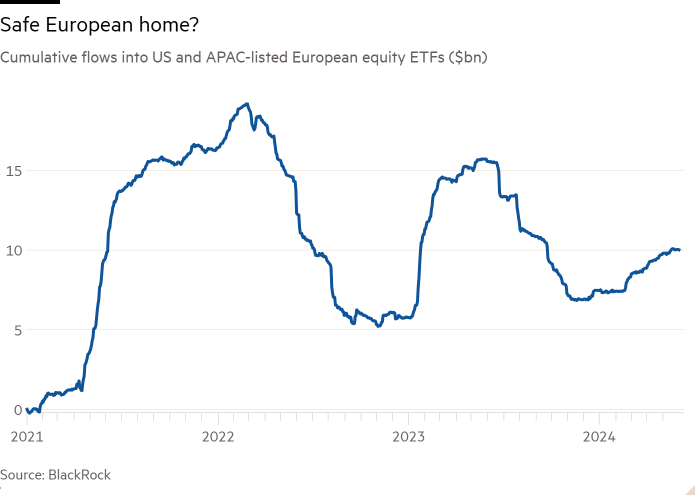
US equities account for half of hefty global ETF flows in May
Financial Times
The all-powerful US equity market grabbed the lion’s share of a solid $116.1bn of global net inflows to exchange traded funds in May, as the industry bounced back from April’s “muted” $69.6bn of buying.
However, amid signs that the tectonic plates of monetary policy and market dynamics were slowly shifting, there were noteworthy inflows to some comparatively niche areas such as European equities, utility stocks and high-yield bonds.
High-yield bond ETFs pulled in a net $5.4bn of new money in May, according to data from BlackRock, their strongest month since November and an emphatic reversal of the $2.2bn they bled in April.
Flows to junk bond ETFs even outstripped the $5.1bn sucked up by investment grade bond funds, something that had only previously occurred once in the prior 12 months.
“It’s rare for high yield to be a bigger portion than investment grade,” said Karim Chedid, head of investment strategy for iShares in the Emea region at BlackRock.
The majority of this money was directed to US high-yield, but Chedid noted that the European market had seen steady buying since November, and believed this was now where the real opportunity laid.
“We see relative value in high yield on the European side,” he said, with yields of 7 per cent plus. “The spreads are trading cheaper [than in the US] even though the quality of the universe is higher.”
Chedid was also cheered by “the green shoots that we are seeing in the European economy”, given that “high-yield tends to be linked closely to growth”.
That said, not all fixed income investors were as gung-ho to jump into the more speculative end of the bond universe.
Safety-first short-term government bond ETFs, defined as those of up to three-year tenor, soaked up $4.2bn of net inflows in May, surpassing the $3.1bn witnessed in April, which itself came after $15.2bn of outflows between November 2023 and March.
Equities were also in demand, with global ETF flows rising from $40.9bn in April to $69.9bn in May, according to BlackRock.
As is usually the case, the US stock market hoovered up the vast majority of the money with May’s $55.7bn of net buying, a sharp bounceback from April’s insipid $18.1bn.
But emerging markets also saw demand, attracting $3.9bn, up from $1.4bn in April. European equities garnered $2.4bn and although this was below April’s $3.1bn, Chedid believed it was part of a longer term, ongoing pattern.
“This has continued the trend of European equity ETF buying year-to-date,” which
The full article is available here. This article was published at FT Markets.
Comments are closed for this article!